Once, at the end of May, I visited two capitals of Poland — Warsaw and Krakow. Warsaw is the capital of the country at the present time, and Krakow (the second largest city and former capital) to this day has the name of the Capital Royal City of Krakow (Stołeczne Królewskie Miasto Kraków). Warsaw became the de facto capital in 1596, when King Sigismund III moved his residence there after the fire of the Wawel Castle in Krakow.
I arrived in Warsaw early in the morning, then I was driven to the historical center — the Old Town, and I went for a walk, turning my head around in search of something interesting, and now and then photographed the surroundings. This was my first visit to Poland.
The first mention of Warsaw appears in the 14th century. Since then, the city has had to be rebuilt several times. World War II proved to be the most devastating. At the end of the war, Hitler ordered the complete destruction of the city, libraries and museums to be taken to Germany or burned. About 85% of the city was destroyed, but subsequently the Old City was carefully restored — according to old photographs, drawings and architectural drawings.
The main object of the Castle Square is the Royal Castle, from which two fragments of the walls remained after the bombing. The building was restored in the 70s. Excellent work, it seems to me that many tourists do not even suspect that this is a "remake".
It's incredible, but the Old Town with its medieval street layout and Renaissance facades looks authentic.
Behind the meticulously restored facades there are apartments that are modern by post-war criteria and have a completely different layout and equipment than their historical originals.
There is a legend about the founding of Warsaw: a king named Kazimierz came across a poor fishing hut on the banks of the Vistula river. There he found a young fisherwoman who had just given birth to twins named Wars and Sawa. Casimir became their godfather and rewarded the fisherman's family for their hospitality. The fisherman built a house with this money, around which other fishermen began to settle, which marked the beginning of Warsaw.
On the bridge across the river, a very pleasant work by a graffiti artist unknown to me. Such pictures adorn the city, in my opinion.
There are many statues in the streets...
...and ornaments, only lovers of "tags" spoil all the beauty. And this, in my opinion, is not beautiful.
Market Square of the Old Town (Rynek Starego Miasta). This small square is considered one of the most beautiful in Poland, with an unusually harmonious multicolored ensemble of predominantly four-story merchant houses of the 16th-18th centuries, each with individual architectural details in the Gothic, Baroque or Renaissance style. All this is an amazing work of restorers — it is almost impossible to believe that the square is a copy of what was on this site before the war.
In the middle of the square stands a monument to the Siren, a mermaid — half-woman half-fish with a sword and shield in her hands.
According to legend, two mermaid sisters lived a long time ago in the Baltic Sea. One day they decided to see the world. One sister sailed west towards Denmark. Her further fate is known to all. In the port of Copenhagen, you can see a sad little mermaid sitting on a rock. Another sister, past the seaside Gdansk, swam into the Vistula river and swam along it. In the area of today's Warsaw (then it was a small village), fishermen caught a mermaid and wanted to eat her. But when the Siren sang, the fishermen were fascinated by her voice, and they freed the mermaid. Struck by the beauty of the banks of the Vistula and the kindness of the locals, Sirena stayed here to live. Every day the sea maiden sang her wonderful songs for the fishermen.
Once a rich and incredibly greedy merchant, deciding to make money on the magic singing of the little mermaid, caught her and put her in a cage. But, having learned about this, all the surrounding people, fishermen and farmers, came to the mermaid, who had already become their favorite, to help. Once again at large, Sirena swore to protect Warsaw and all its inhabitants from any troubles and misfortunes. Since then, the grateful Warsaw residents have depicted the militant mermaid on their coat of arms.
It so happened that I arrived in Warsaw on May 26, Thursday, and it turned out that day was the Feast of Corpus Christi (or Solemnity of the Most Holy Body and Blood of Christ) — a celebration introduced into use by the Catholic Church since the 13th century in memory of the Real Presence of the Body and Blood, Soul and Divinity of Jesus Christ in the elements of the Eucharist.
In Poland, the Feast of Corpus Christi began to be celebrated in the 14th century. The first Eucharistic procession took place in 1320 in Krakow. This day in Poland is a day off and the citizens begin to gather in the St. John's Archcathedral.
This is a monumental church, which is very difficult to photograph entirely, since the entrance to it is located on a small street. This is how the church looks from the waterfront (to the right of the Castle).
The church was built in 1390 in the brick Gothic style as a place of coronations and funerals of the princes of Mazovia, it became the main temple of the city.
In 1944, along with the rest of the historical center of the city, the St. John's Archcathedral was destroyed by the German occupation forces during the suppression of the Warsaw Uprising, and all the interior decoration was destroyed.
The church was restored according to old drawings in 1947-1954 with the project of the architect Jan Zachwatowicz.
The interior renovation was completed in 1973.
Organ concerts are held here daily.
The Feast of Corpus Christi used to be celebrated for a week, and mass processions were held on the first day and then on the last, eighth day, called the Octave of Corpus Christi (Polish Oktawy Bożego Ciała).
It was on this last day of the celebration that specially made wreaths were consecrated in the church, which were kept for a year as a healing remedy.
Can someone tell me who is in the crown? I was very surprised to see this man among the parishioners.
I go outside to see what is happening around at this time. The Royal Castle, Market and Castle Square and the Cathedral are located very close to each other. In the old days, our cities were so small...
A little distracted by photographing the details :)
There are many soldiers from different branches of the military on the street.
Lots of flowers in the street beds.
And in the hands of people.
The monks distribute the texts of prayers and just pray. Everything that happens inside the church is broadcast to the street through speakers installed at the entrance.
A very colorful man with a flag. He is waiting for the procession Blessed Sacrament to begin.
People on the streets congratulate each other.
Mass in the church ends and most of the people kneel right on the pavement.
The Feast of Corpus Christi is a celebration whose purpose is to strengthen the faith of Catholic Christians that God is really present in the Eucharist, that bread at a certain moment of the Liturgy becomes the body of Jesus Christ. This holiday has firmly entered the national life.
The celebration is associated with Eucharistic miracles. There have been many of them in the history of the Church. And a miracle from where the Feast of Corpus Christi originates is connected with the town of Orvieto in Italy. In the 13th century, the residence of Pope Urban IV was located here. In 1263, a linen cover (altar napkin) with blood stains was delivered to him here. They brought it from the city of Bolsena, where the Czech priest Peter from Prague stopped on his way to Rome. There, during the Mass, which he served from the Eucharistic bread, real blood splashed. For people, this was a sign of the real presence of the Body of Christ in the Eucharistic bread. A square napkin with blood stains began to be taken out into the streets during solemn religious processions.
This celebration in Poland has a rather long tradition. The first Eucharistic procession took place in 1320 in Krakow. Until now, this form of piety has a special meaning for religious Poles.
In Poland after the Second World War, when all public gatherings of believing Christians were prohibited, the processions during the Feast of Corpus Christi (they were allowed to take place) became a manifestation of faith as such.
They often had the character of some kind of opposition or protest. This combination of religious and social elements, even political ones, was of great importance in the case of Poland. Many Poles demonstrated in this way that they are Christians.
The ambulance has been on the square since morning.
Medical workers stay among the worshipers.
In almost all towns of Poland, both small and large, on this day, festive processions take place.
A lot of people in unusual (for me) costumes, apparently national.
This is a colorful procession, very beautiful. Bishops and clerics, representatives of city authorities, local artisans, firefighters, scouts, schoolchildren, members of various societies and organizations take part in it.
They carry gonfalons, flags, statues decorated with colorful ribbons... How wonderful that I was lucky enough to get to Warsaw during the celebration. As a photographer and just as a spectator, I was lucky to see this magnificent procession.
A brass band is playing.
The priest in a special monstrance called (from the Latin "monstrare" - to show, demonstrate), carries the Body of Christ. Outwardly, it looks like a white, flat, round piece of unleavened bread.
There is a nice tradition — during the procession, little girls in white dresses scatter flower petals.
The Castle Square, in the center of which stands a column dedicated to King Sigismund, was full of people. And almost all of them followed the procession.
Soon the square was completely empty.
And I went for a walk further along the quiet streets of Warsaw.
To be continued.
Posts about the trip:
- Poland Stories. Warsaw. Old Town and a Religious Celebration
- Poland Stories. Warsaw. Walking Around the City, Old and New
- Poland Stories. Warsaw. Views from Above and the End of the Walk
It's better to watch photos in high resolution (links are right on the pictures).
Camera: OLYMPUS E-M5
You can also see my photos in my blog LJ and in my profile on NatGeo. You can read a short interview with me here.

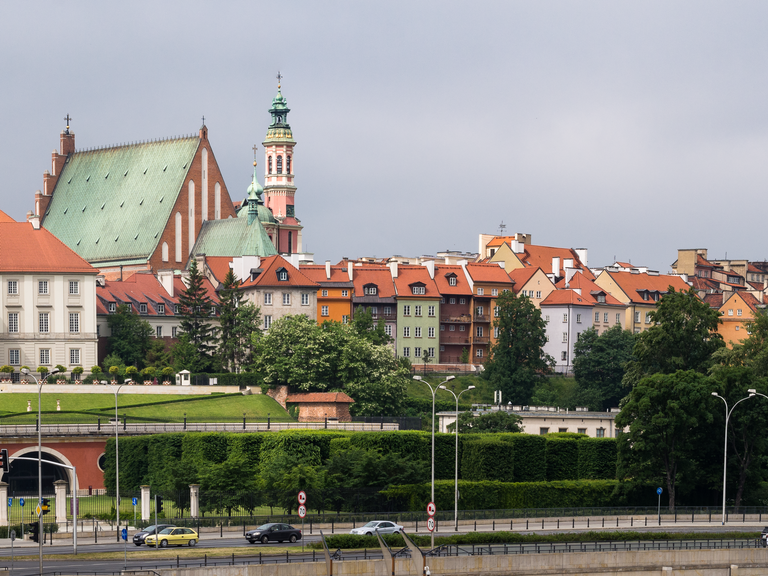
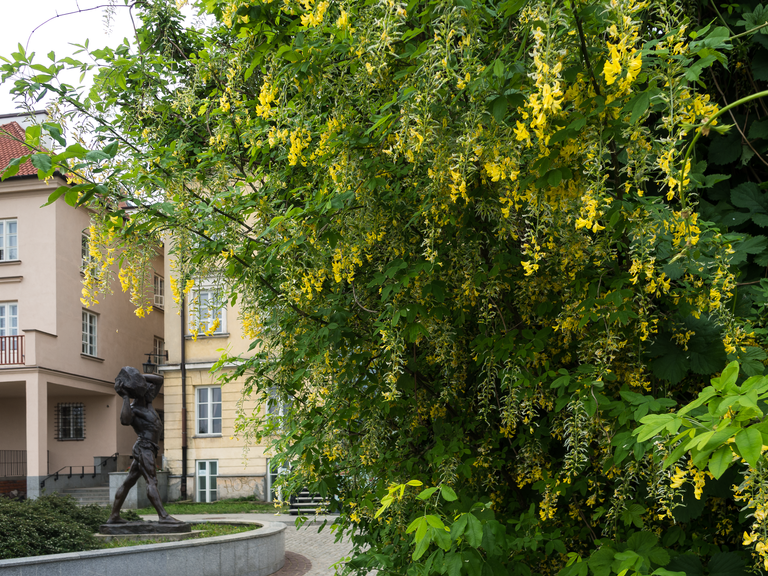
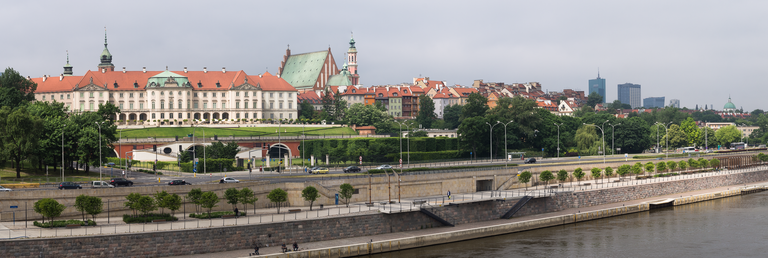
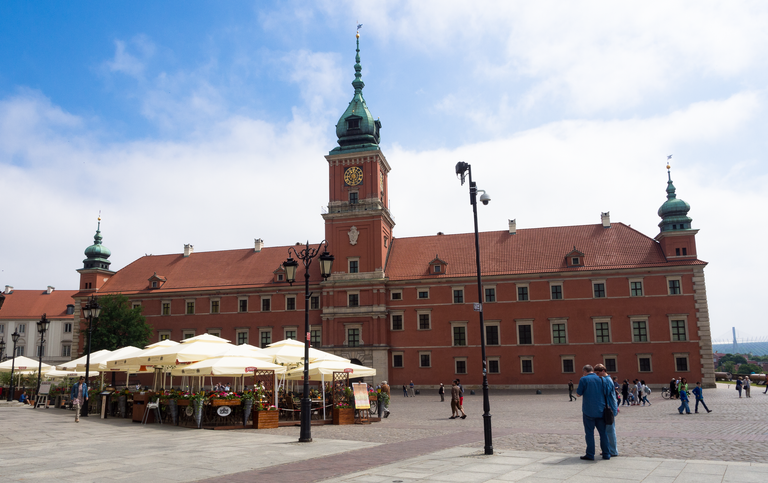

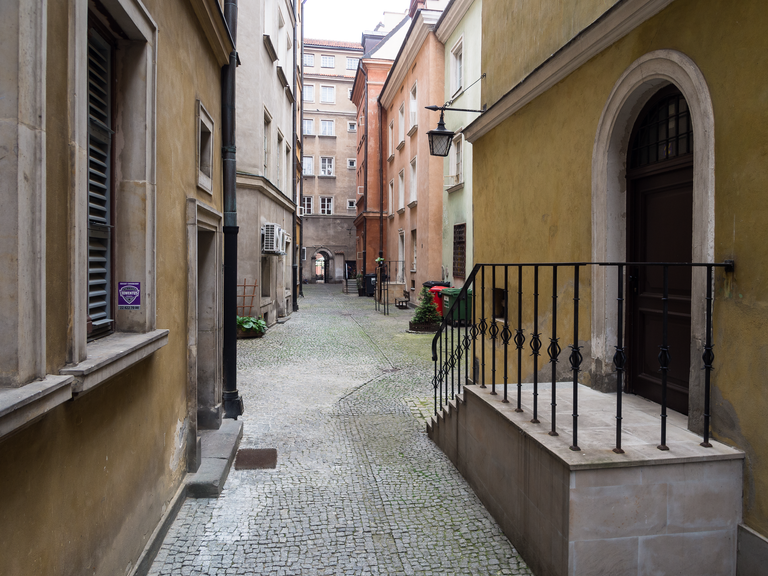
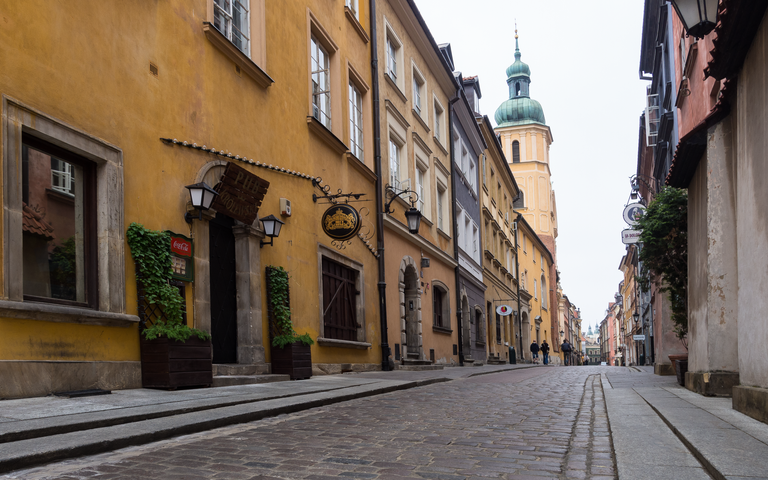
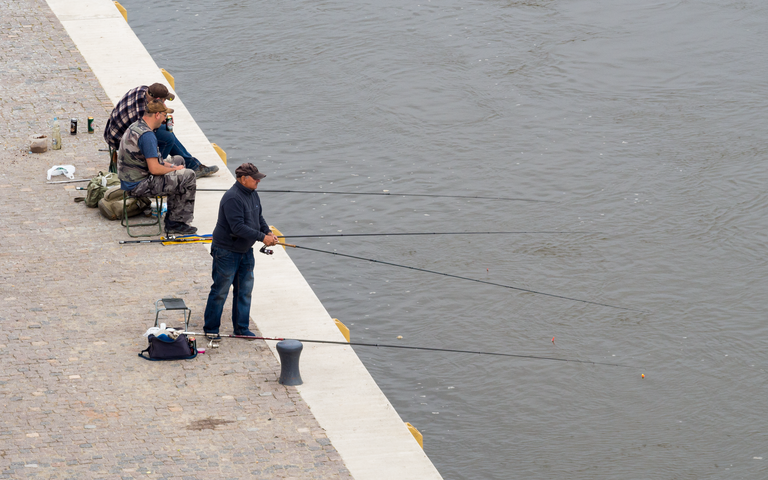
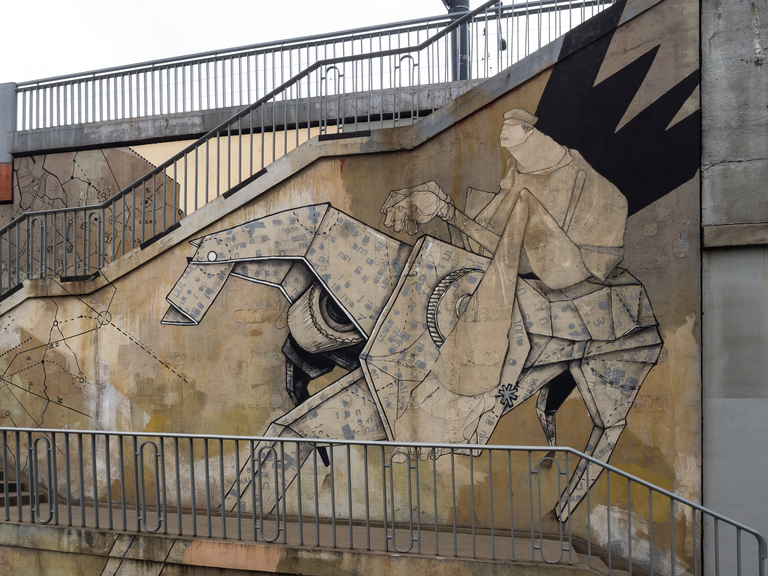
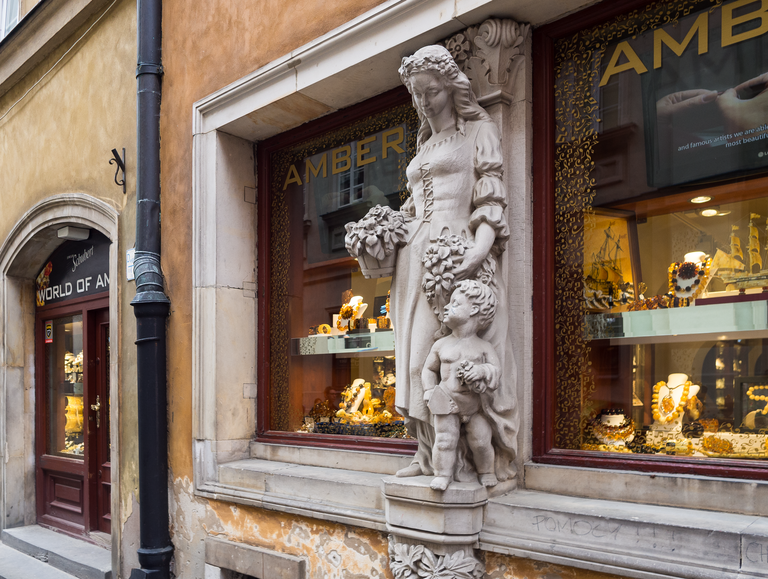
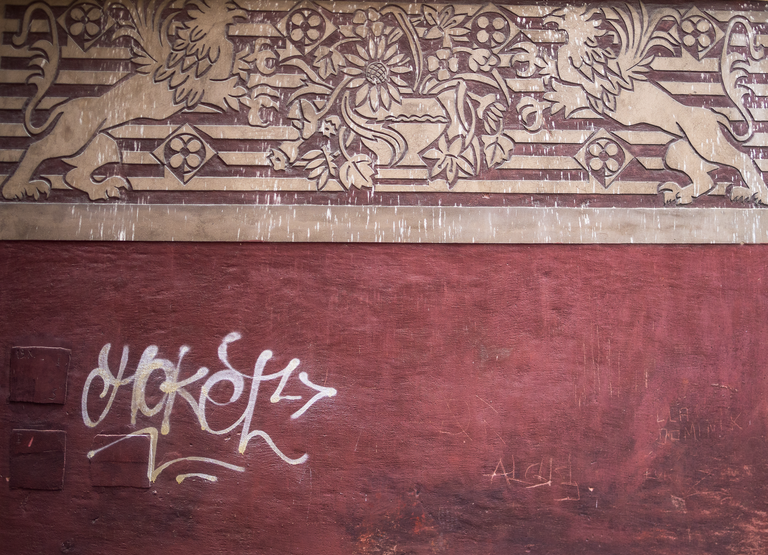

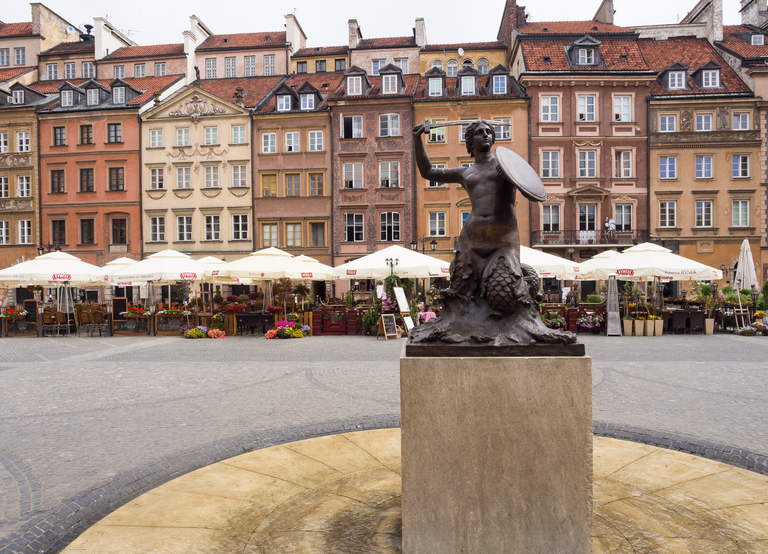
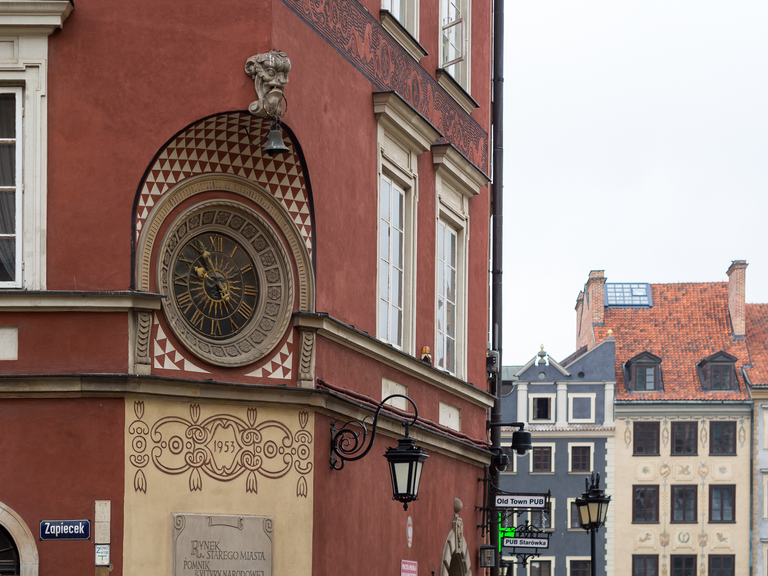
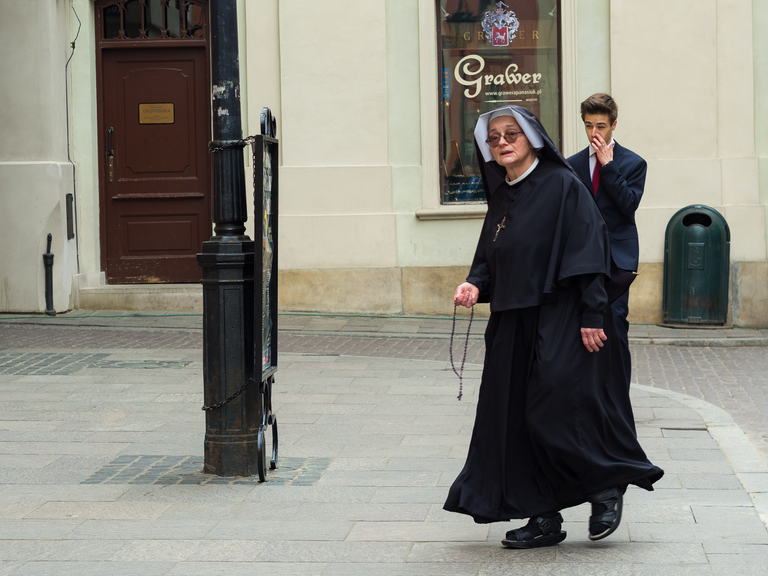
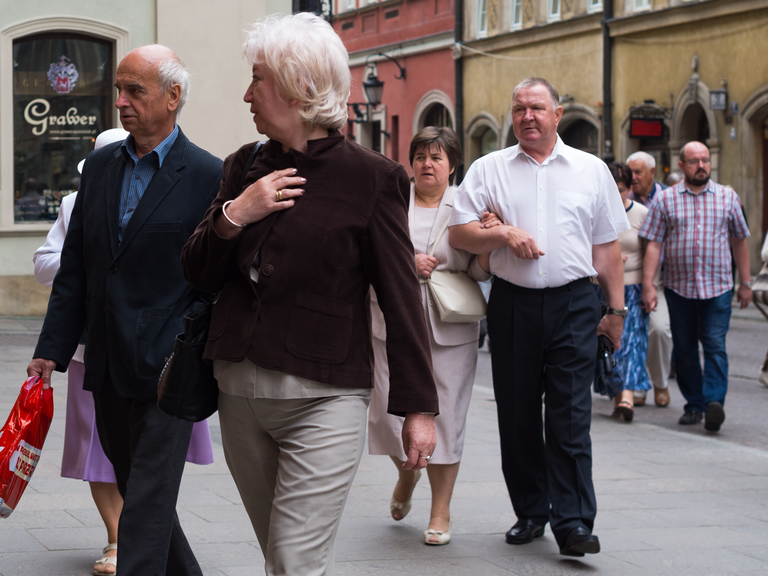
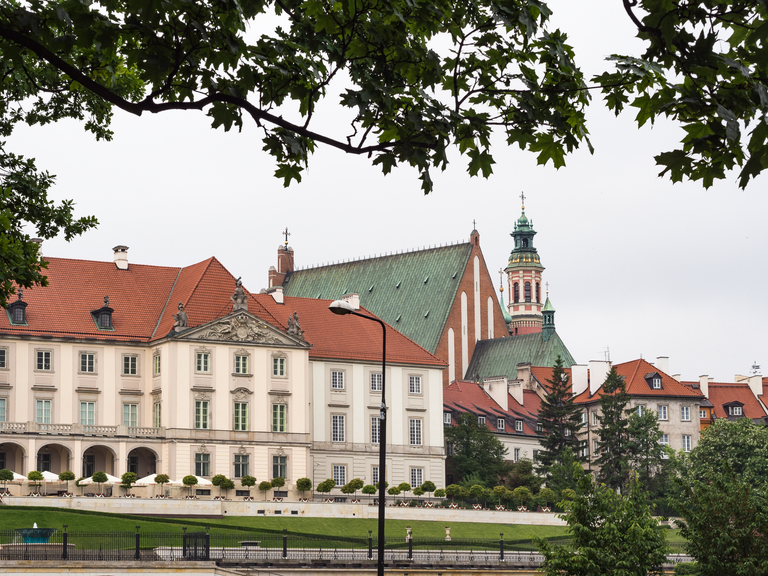

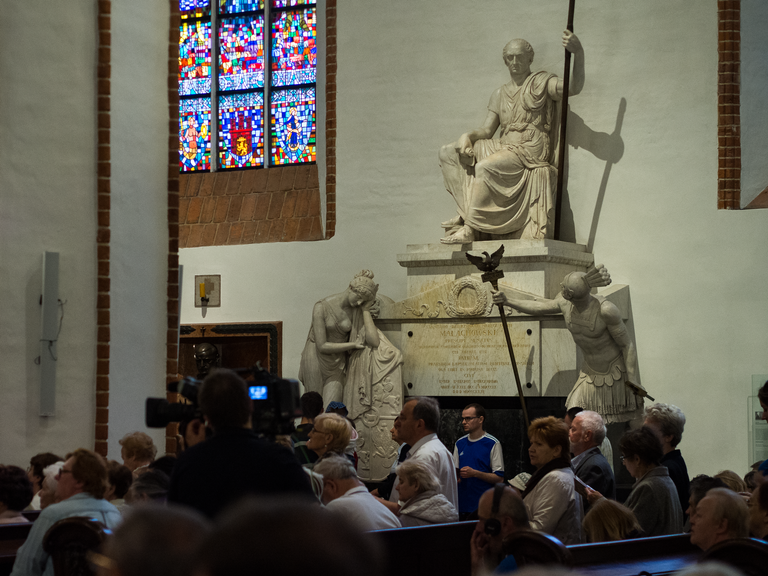
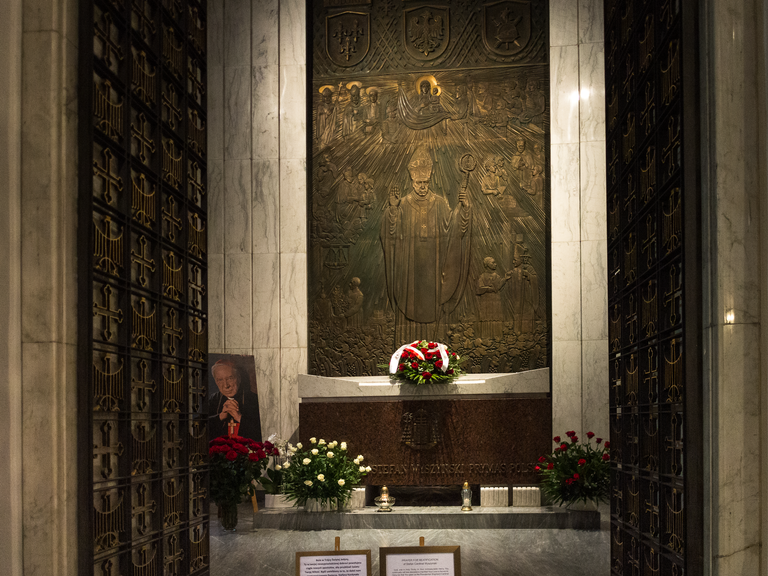


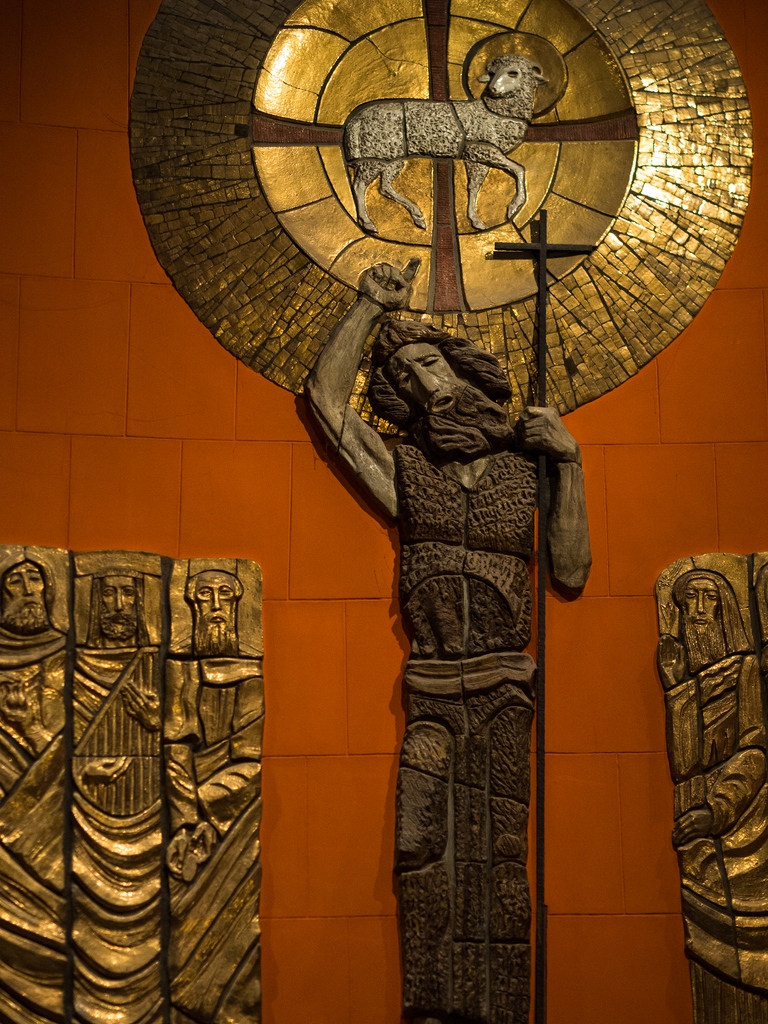
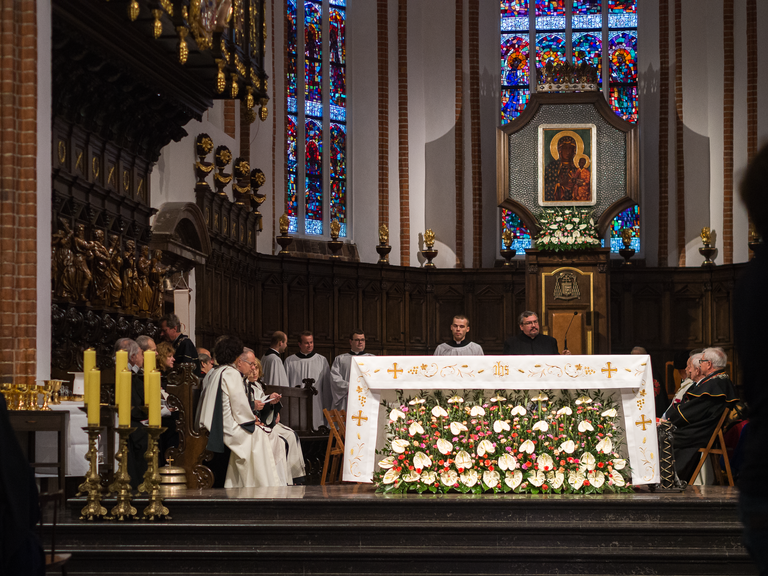

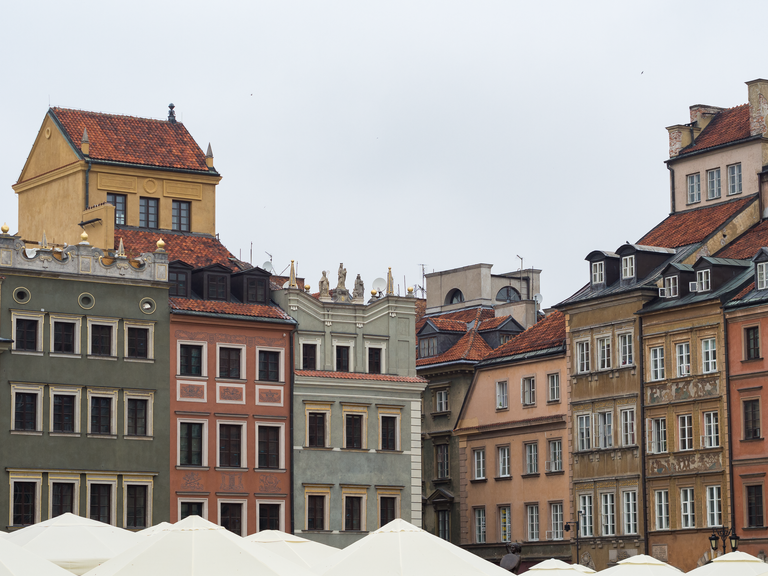
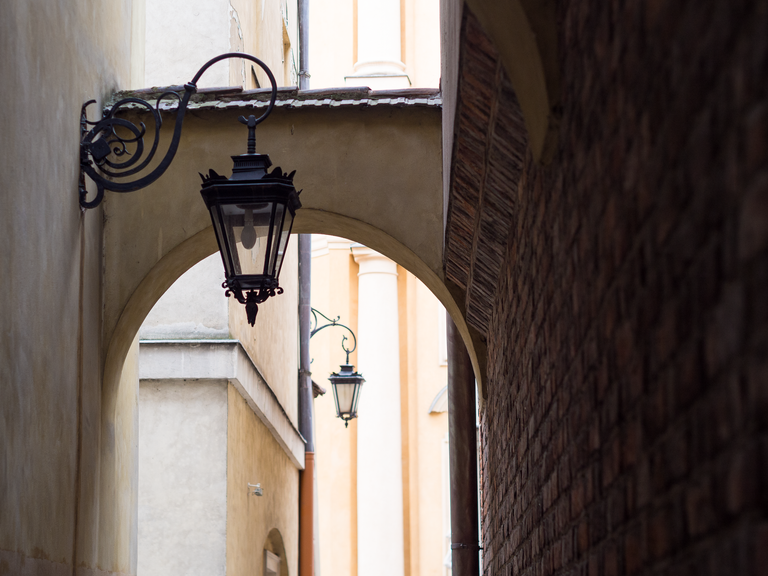
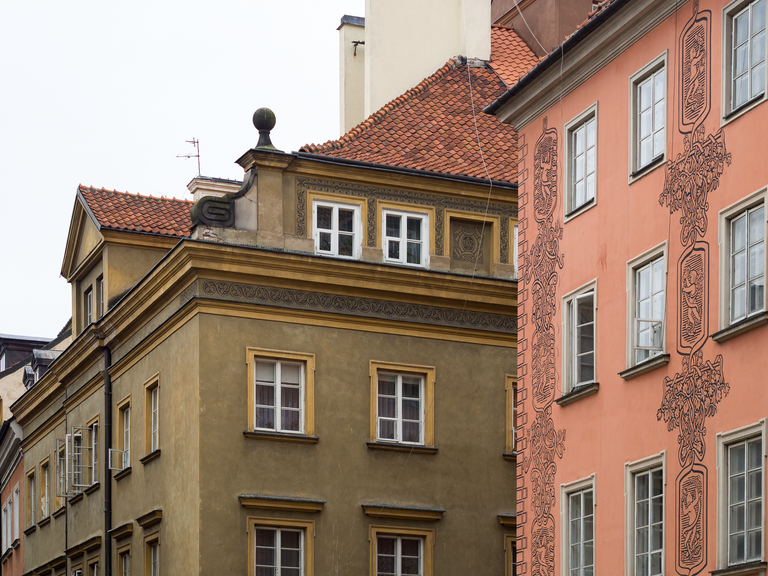
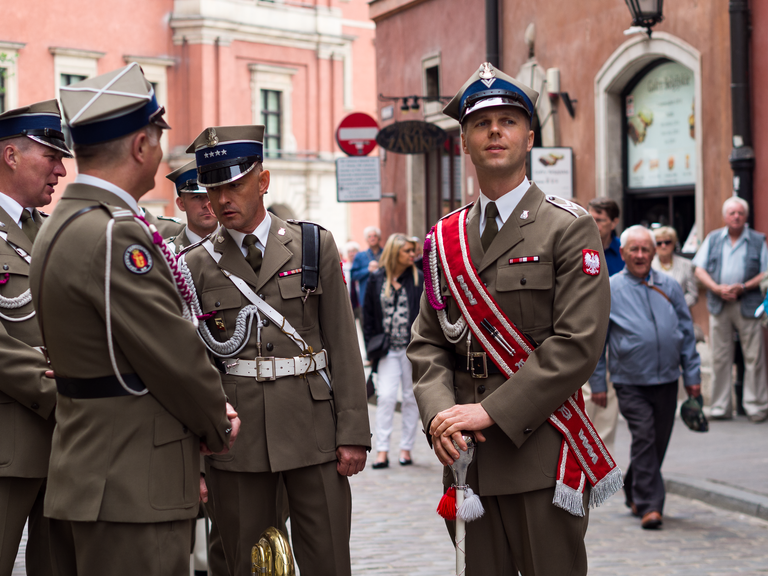
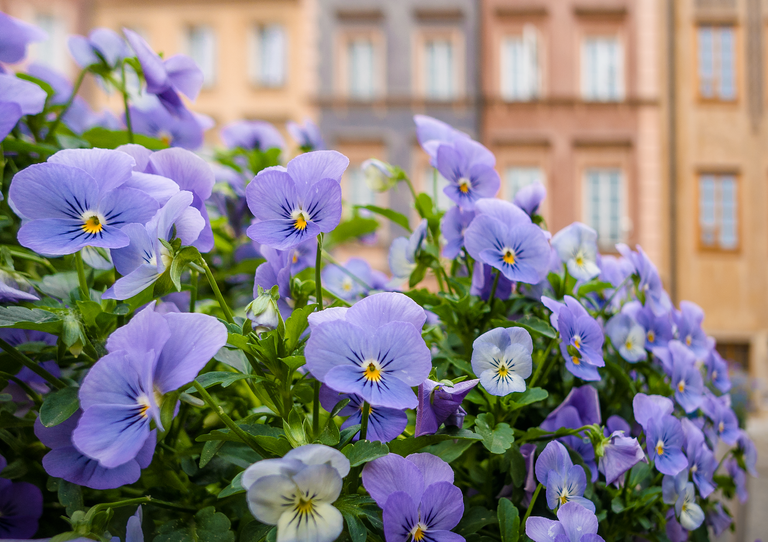
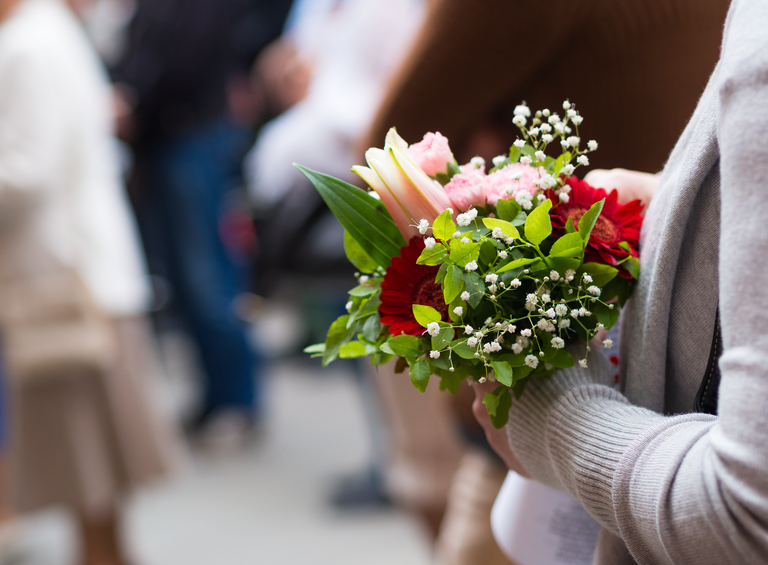

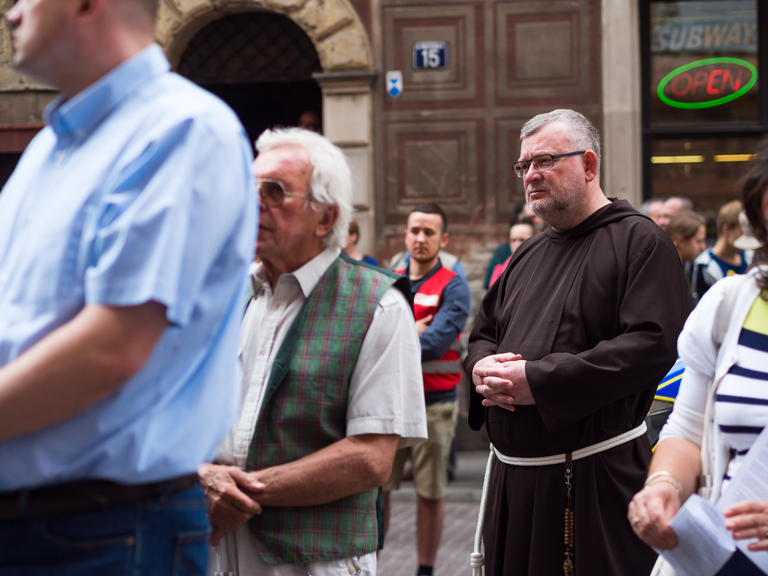
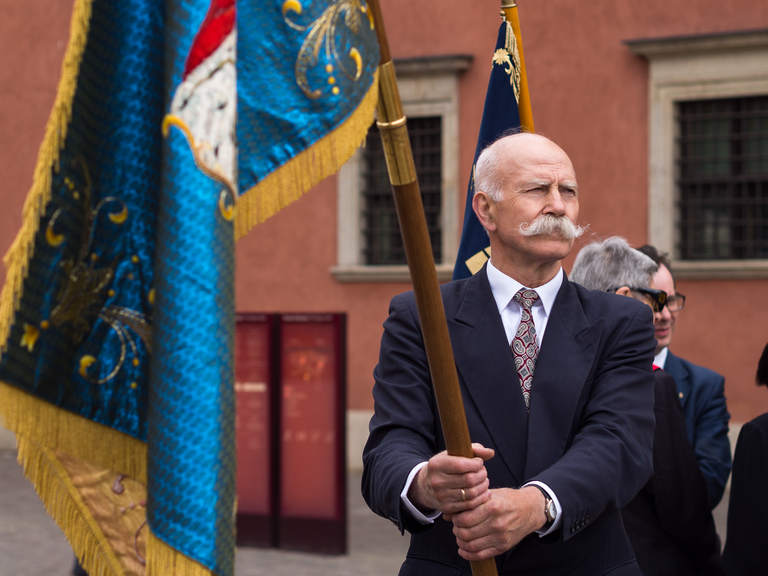
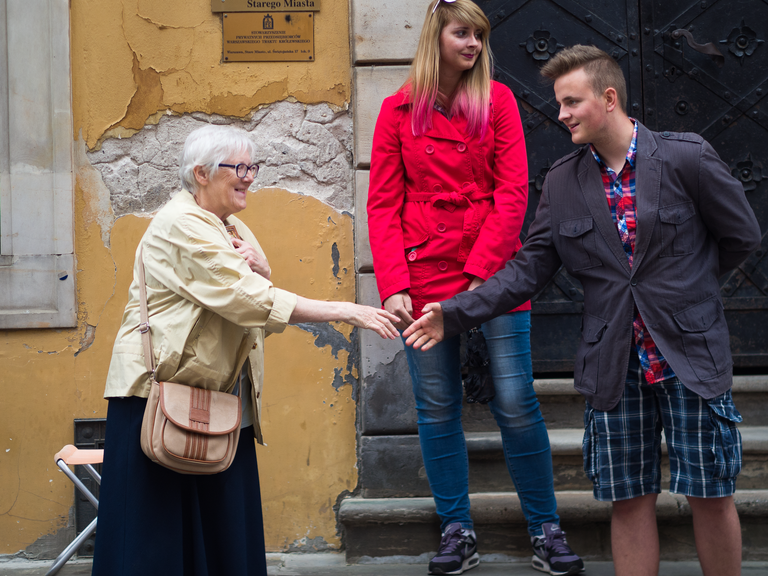
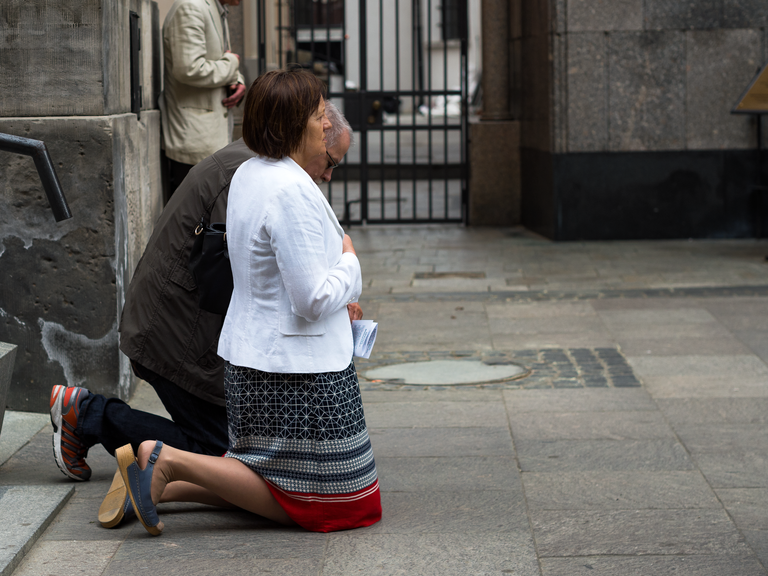
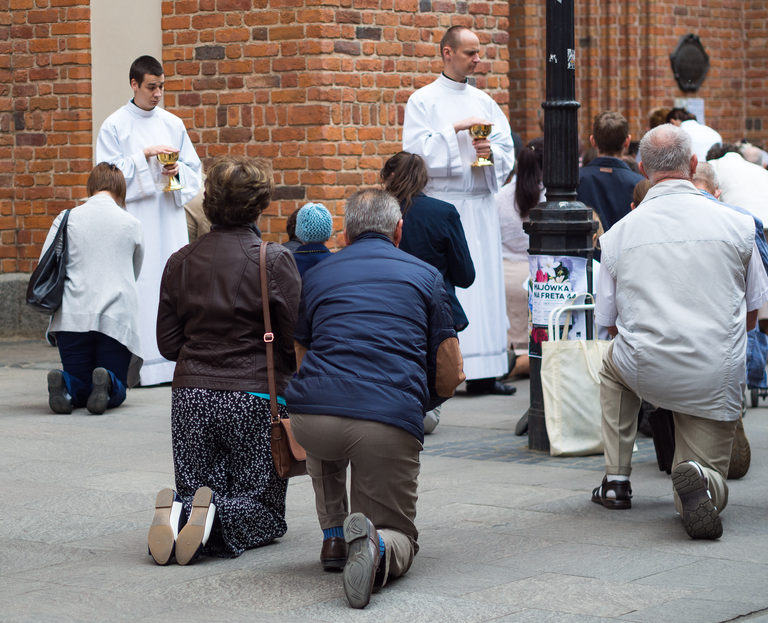
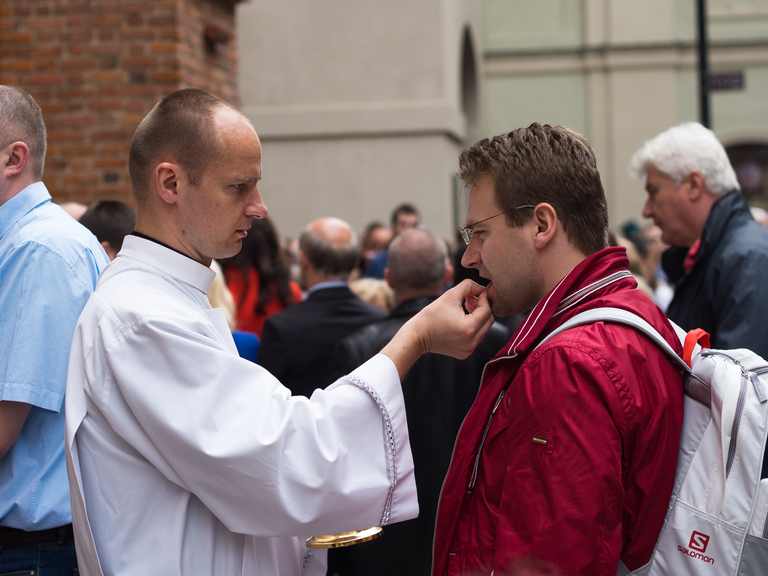
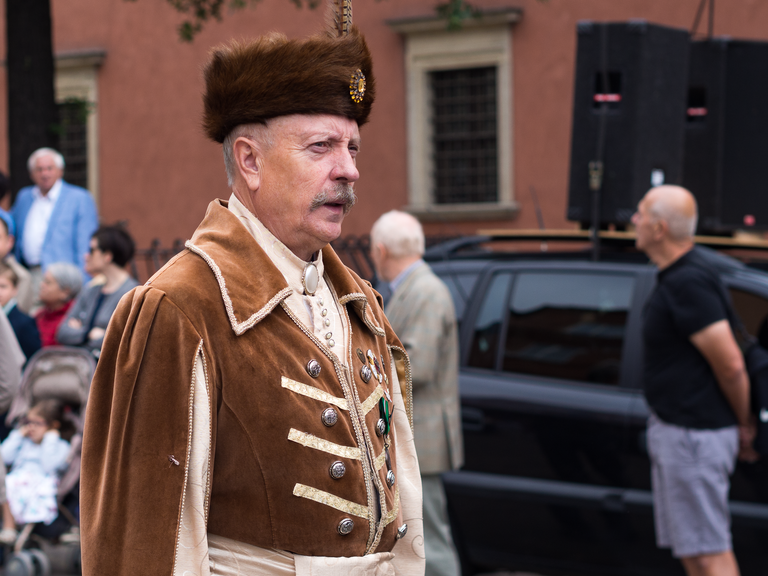
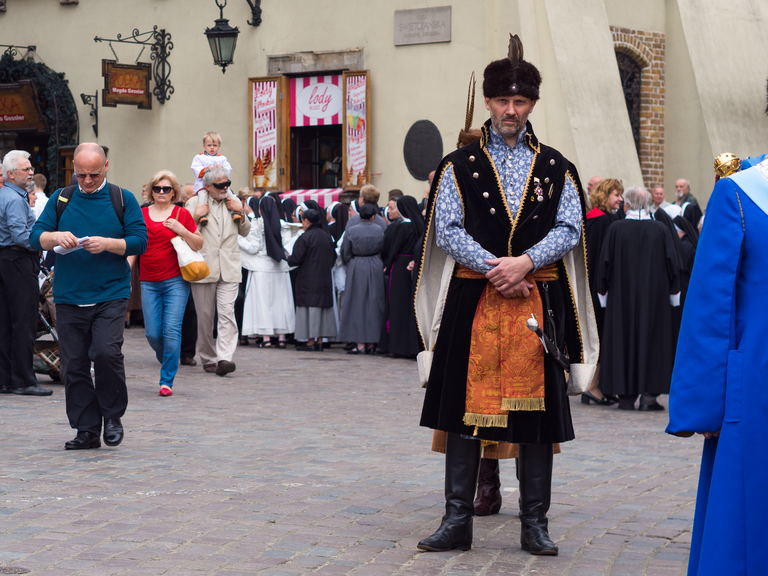
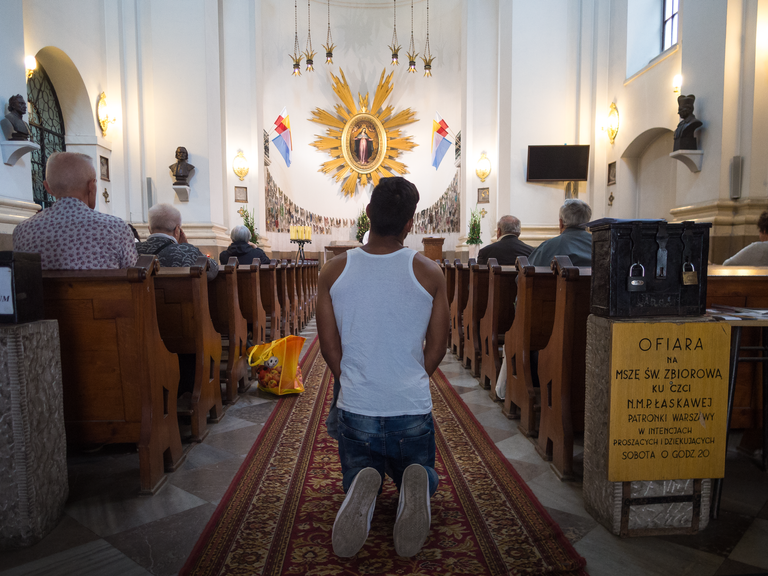
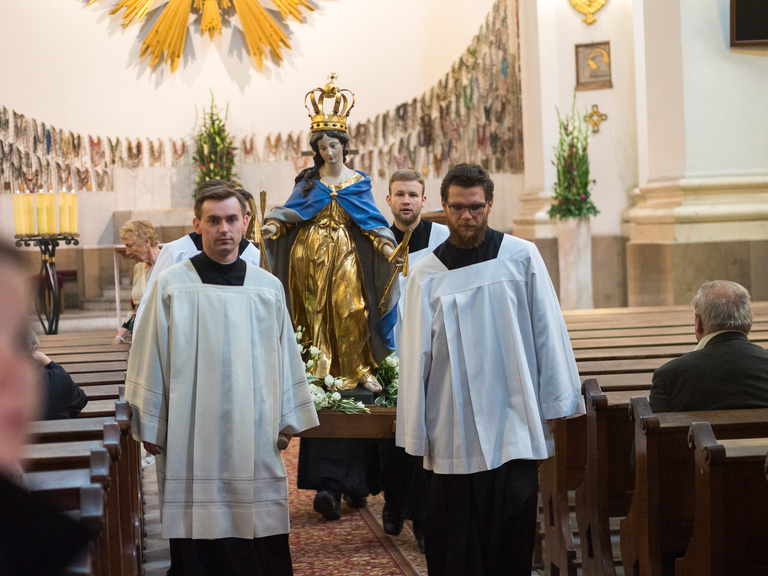
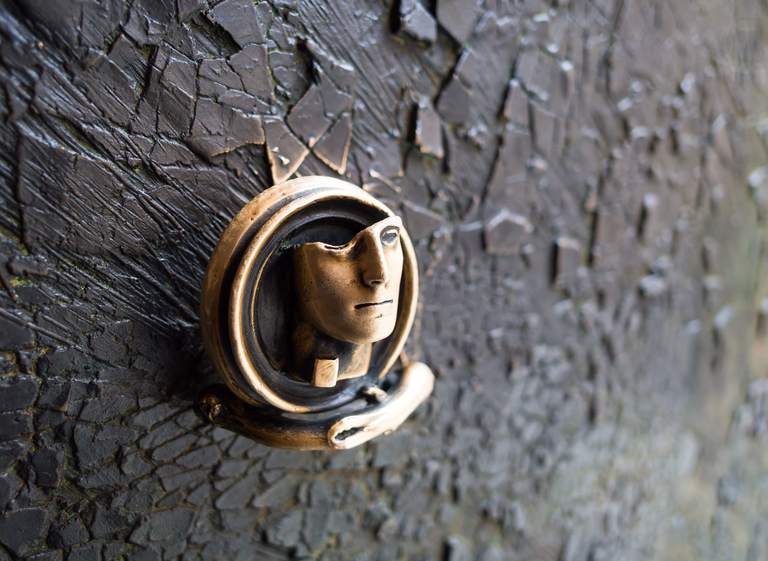
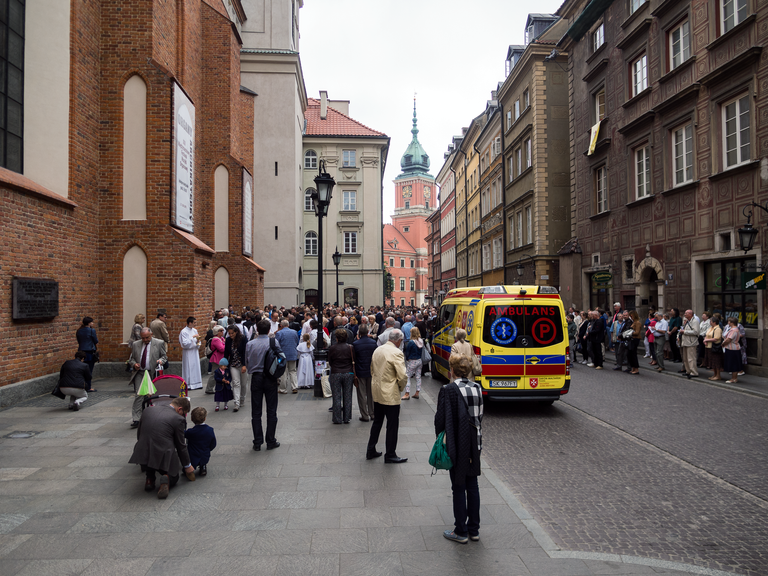
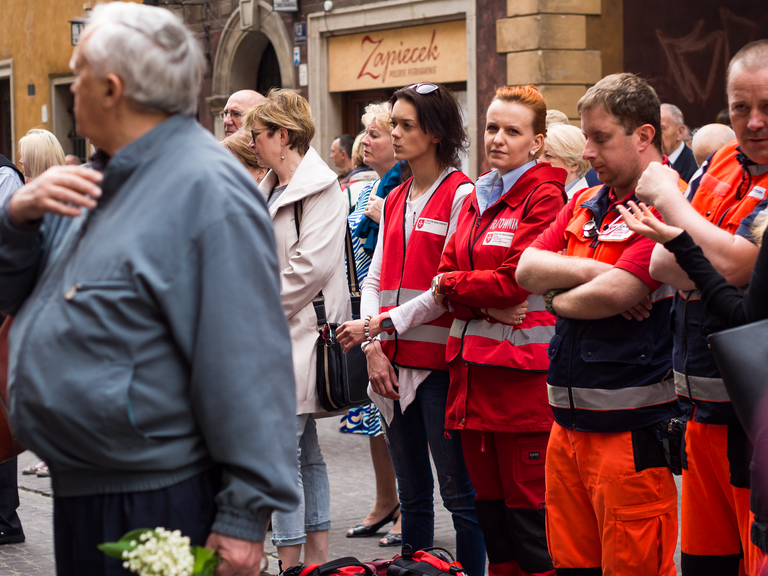
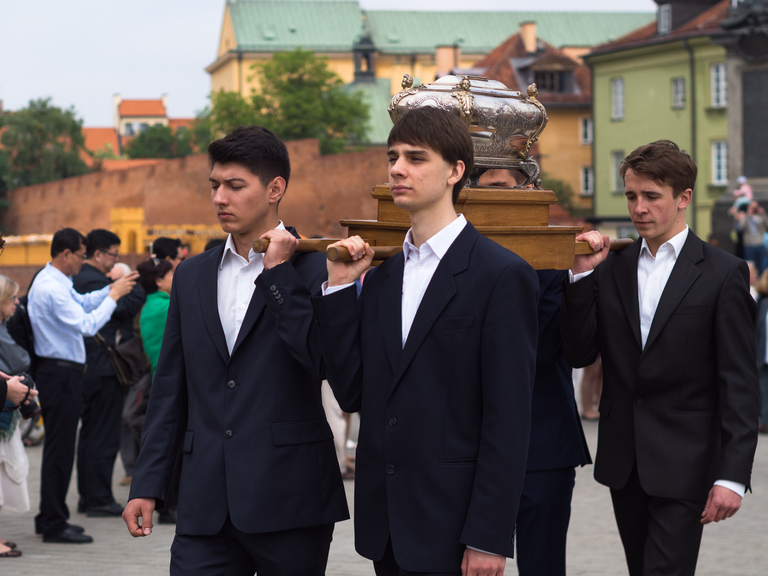
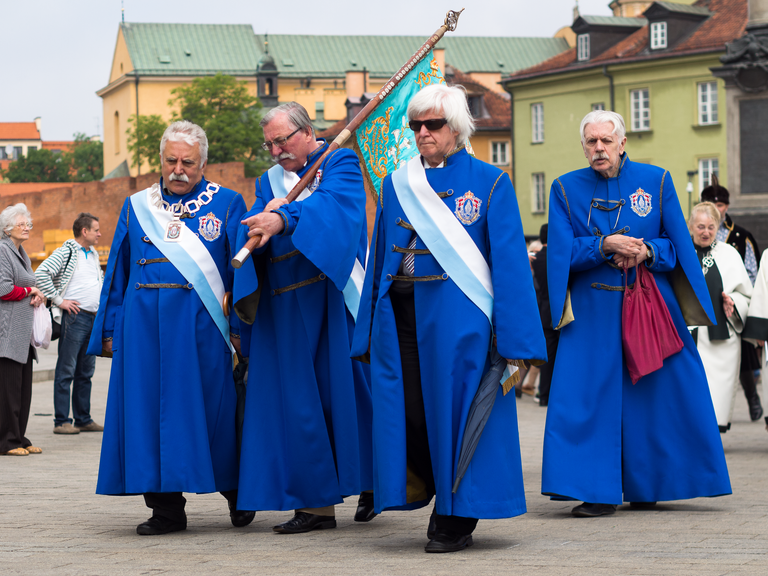
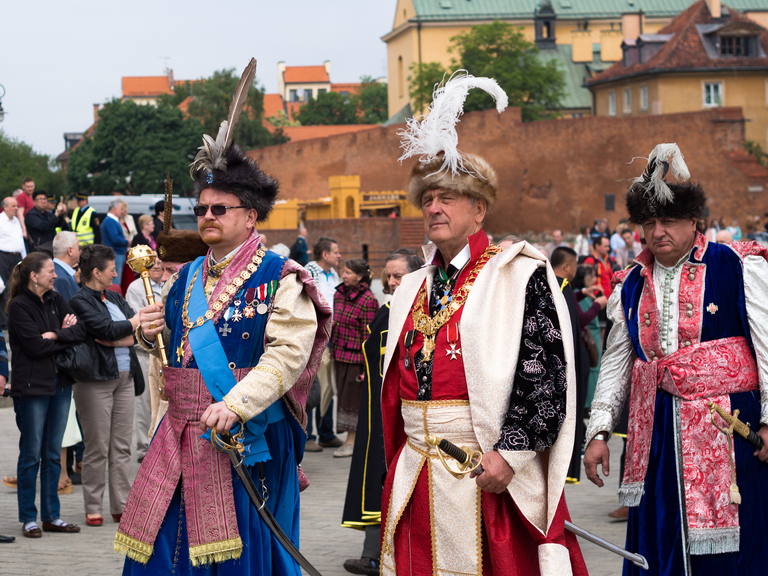
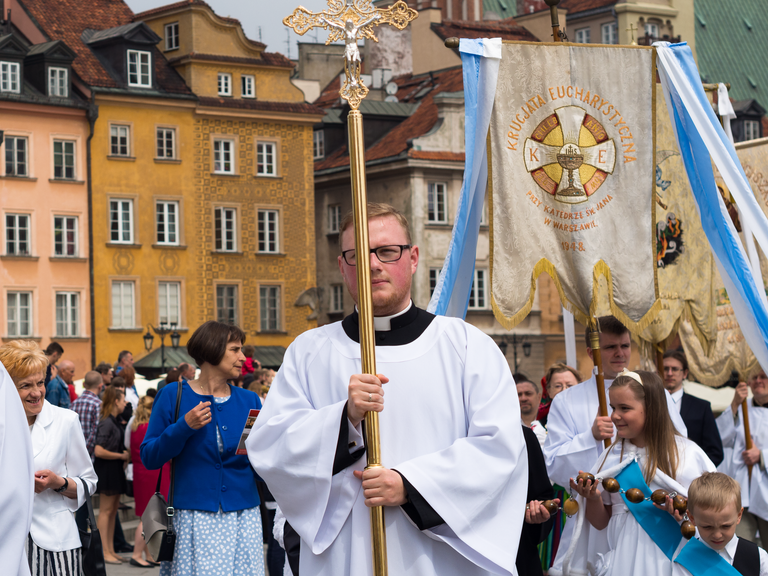

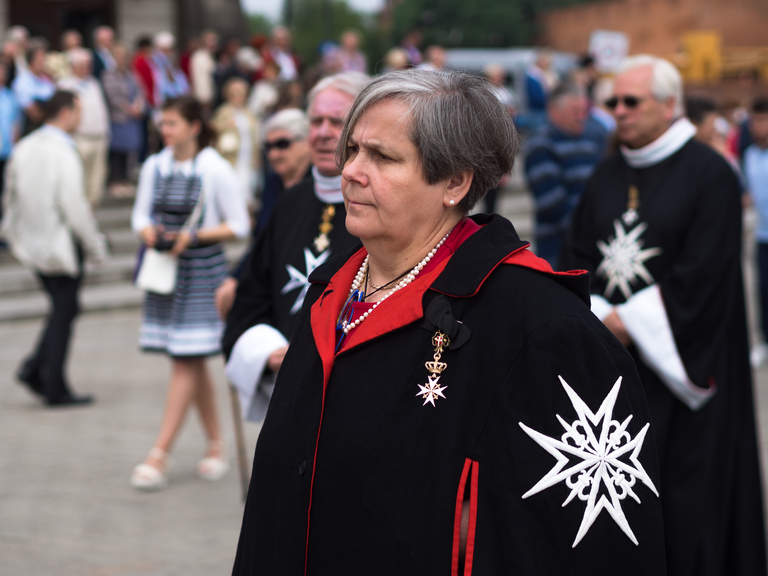
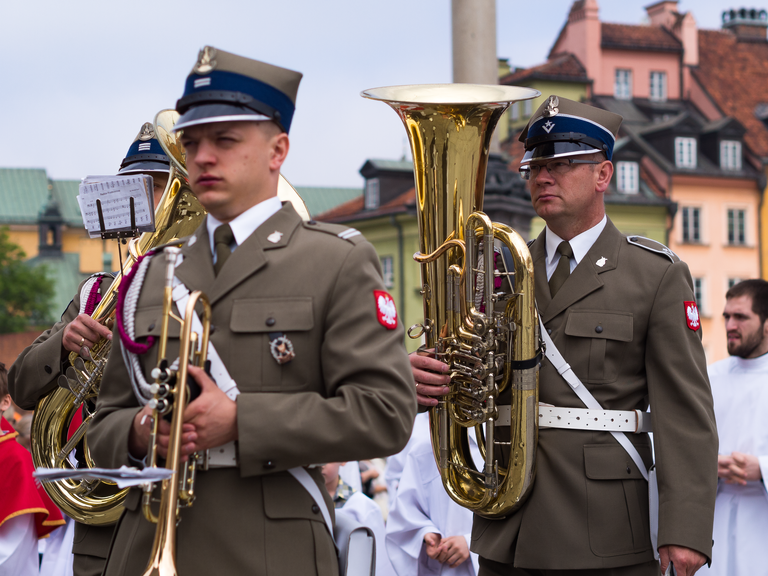
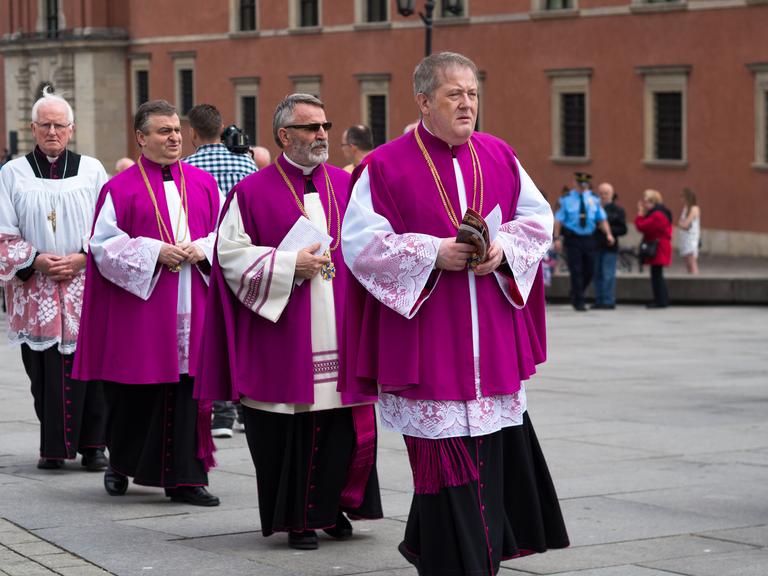
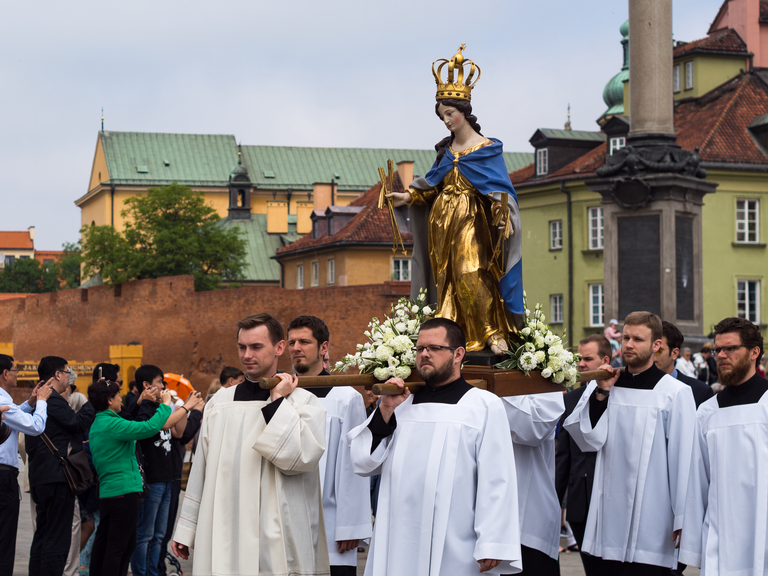
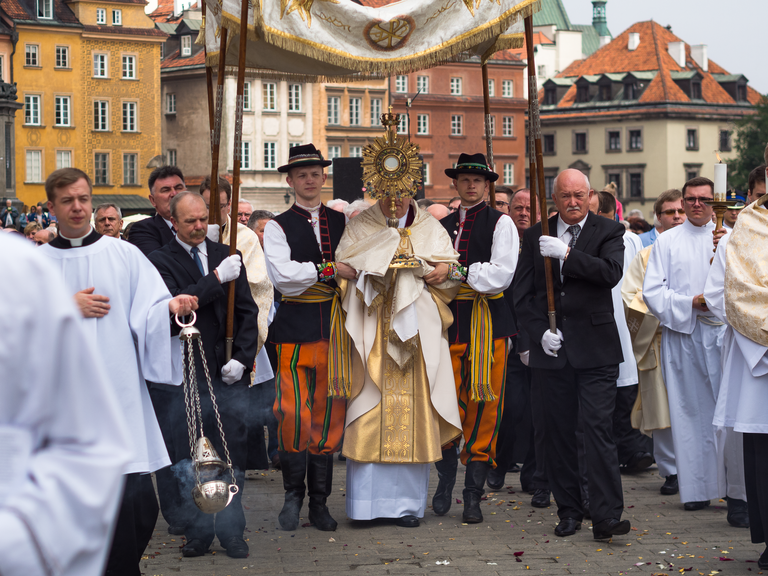
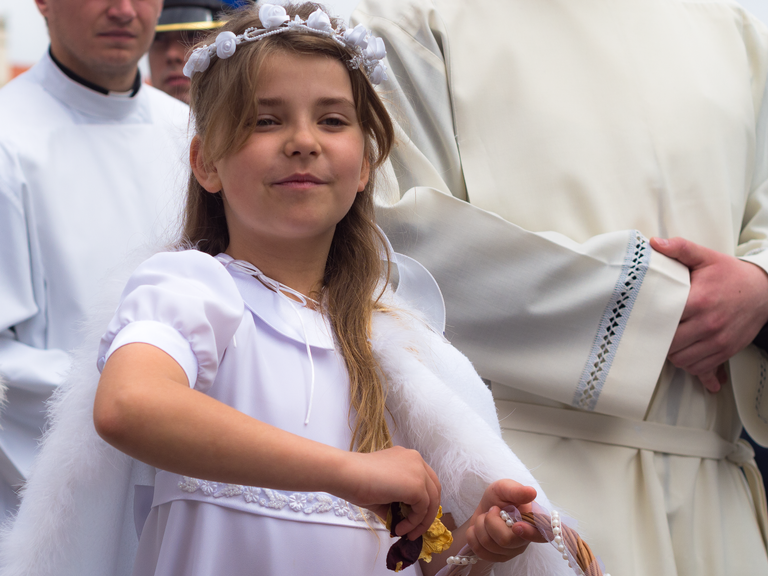

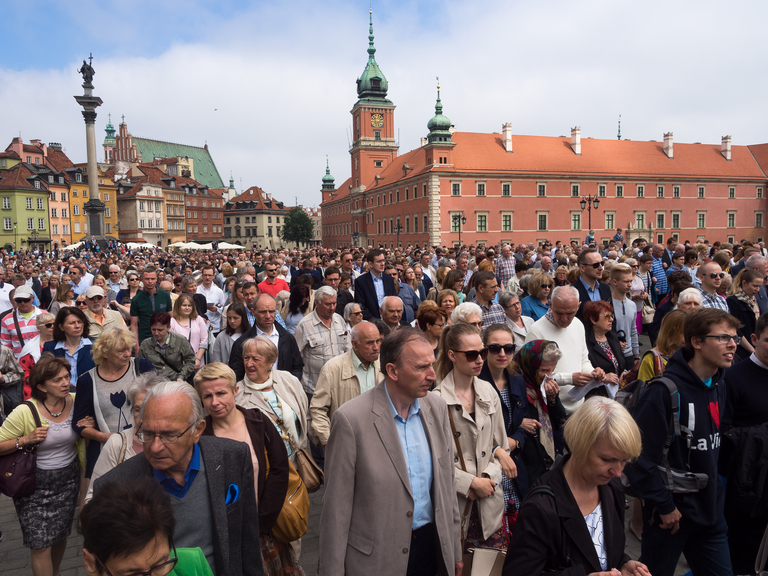
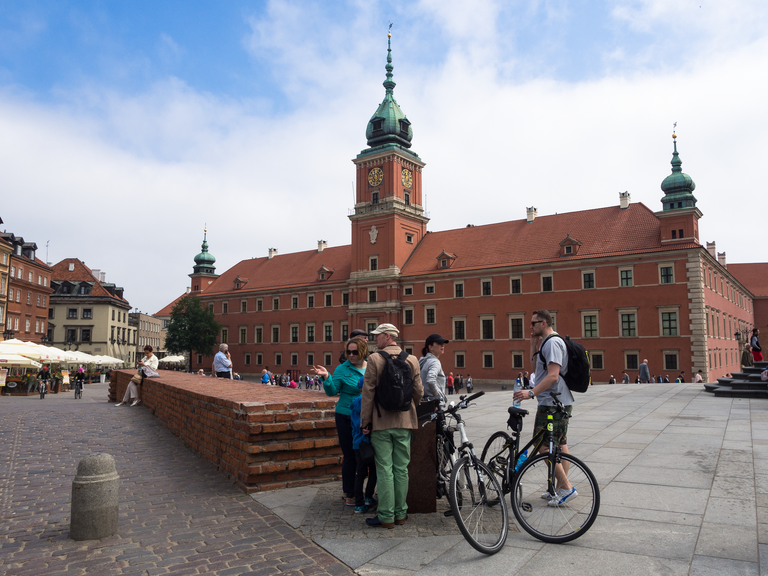
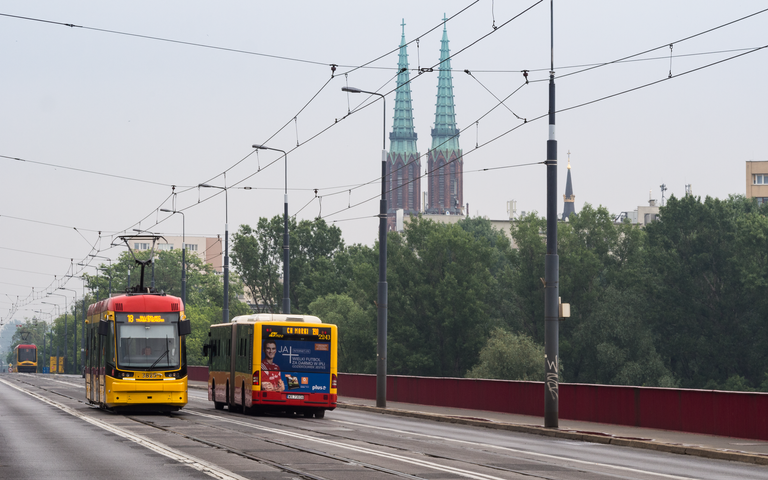
Congratulations, your post has been added to Pinmapple! 🎉🥳🍍
Did you know you have your own profile map?
And every post has their own map too!
Want to have your post on the map too?
I love this view. Greetings from the Philippines!
Hello Philippines! :)
I myself really love this kind of architecture and city views. There should be beauty in the cities.
There is so much to see in your post, amazing! The legend about the founding of Warsaw is a cool one and i think it might not be just a legend, it sounds really realistic;)
I am very glad that you liked it :) It was an interesting day, full of new experiences, new places and views for me.
As for the legend, yes, it sounds quite probable, why not. But this story has different variations, as well as other legends, you can choose :)
Thank you for sharing this amazing post on HIVE!
Your content got selected by our fellow curator @priyanarc & you just received a little thank you via an upvote from our non-profit curation initiative!
You will be featured in one of our recurring curation compilations and on our pinterest boards! Both are aiming to offer you a stage to widen your audience within and outside of the DIY scene of hive.
Join the official DIYHub community on HIVE and show us more of your amazing work and feel free to connect with us and other DIYers via our discord server: https://discord.gg/mY5uCfQ !
If you want to support our goal to motivate other DIY/art/music/homesteading/... creators just delegate to us and earn 100% of your curation rewards!
Stay creative & hive on!
Thanks a lot!
Hiya, @choogirl here, just swinging by to let you know that this post made it into our Top 3 in Daily Travel Digest #1525.
Your post has been manually curated by the @pinmapple team. If you like what we're doing, please drop by to check out all the rest of today's great posts and consider supporting other authors like yourself and us so we can keep the project going!
Become part of our travel community:
Thank you! :)